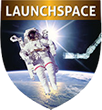Course Details
Course Summary
This course offers a detailed look at basic launch vehicle design and engineering requirements
and capabilities. Primary systems and subsystem are introduced and examples used as case
studies. All launch vehicle types are included with emphasis on established and new launch
vehicle designs. Discussions include current vehicle design and operational issues such as rocket
engine selection options and recovery operations for Falcon 9 first stages. Launch sites, ascent
trajectory design and vehicle selection criteria are all included in the course topics. Course
content also includes realistic comparisons of current launch systems, failures, costs and future
improvements. In fact, attendees are exposed to current developments throughout the launch
vehicle world and given a comprehensive survey of the international inventory of large and small
launch systems. Numerous case studies and examples are used to illustrate important aspects
for users and designers. Additionally, subjects include an explanation of the rocket equation,
classification of vehicle types, payload penalties and general design rules and limitations.
Course Materials
Each attendee receives a PDF copy complete class notes plus a Certificate of Completion.
Who Should Attend
Space mission designers and operations managers, satellite and launch vehicle systems engineers, payload systems engineers and integrators. Launch vehicle subsystem engineers, space industry analysts and satellite operators. Aerospace industry and government consultants. Technologists involved in the projecting space applications into the future.
What You Will Learn
Fundamentals of launch vehicle systems design and engineering. Key launch vehicle design rules of thumb and sanity checks. Fundamental performance trade-offs for users and designers. Design impacts of the launch environment, performance requirements and operational constraints. Launch site selection and requirements. How launchers stack up on a cost-per-pound basis. Important launch vehicle subsystems interactions and trade-offs. Launcher trends including new international and commercial vehicles. Basic launch vehicle acquisition and selection criteria.
Course Outline
1. Elementary Definitions and Principles of Launching Objects into Orbit.
Basic functions of a launch vehicle. Principles of staging and the rocket equation. Types
of missions for launch vehicles. Worldwide survey of operational launch vehicles and
their characteristics. Launch sites and resulting limitations on missions.
2. Fundamental Technologies for Launch Vehicle Design.
Historical overview. Basic terms and definitions. Introduction to the physics and
coordinate systems used in launch vehicle analyses. Analytical techniques and software
tools for designers and users.
3. Launch Vehicle Components and Subsystems.
The minimum set of elements that makes up a launch vehicle. Survey of subsystems
and fundamental interactions. Fundamental trade-off parameters in the design
process. Availability of components and subsystems.
4. Subsystem Technologies in the Design Process.
Launch loads and events. Structural design and stress analysis. Thermal system design.
Determination of aerodynamic properties and heating. Avionics and ascent guidance
subsystems. Navigation systems, including inertial and GPS-assisted. Ordnance systems
for ignition and flight termination. Range safety requirements and constraints.
5. Propulsion Subsystems for Launch Vehicles.
Solid rocket motors versus liquid rocket engines. Off-the-shelf motors and engines.
New developments in rocket propulsion and engine selection. Performance parameters
and how to use them. Availability of propulsion systems and subsystems.
6. Ascent Trajectory Design.
Basic equations of ascent dynamics. Energy losses due to gravitational attraction and
aerodynamic drag. Survey of parameters affecting the ascent trajectory, including
max-Q and max Q-alpha. Subtleties of launch site selection and ascent design rules.
7. Launch Environments for the Payload.
Descriptions of acceleration, shock, acoustic and vibration environments during ascent.
Impact of launch environment on the payload and its design. Case studies of launch
environments.
8. User Defined Launch Vehicle Requirements.
Mission launch needs and objectives that drive the payload envelope, performance,
trajectory design and environmental limitations. Allocation of fundamental interfaces
between launch vehicle and payload (e.g., guidance, navigation, control, propulsion
and telemetry) based on cost, reliability and risk. Launch provider selection criteria
and basic contractual documents.
9. Systems Engineering Practices and Considerations.
Systems requirements and specifications. Testing philosophy. Assembly and launch site
considerations. Impact of range safety requirements. Keys to reducing launch costs.
Launch licensing, countdown sequencing, insurance and practical constraints.
10. Future Satellite Launch Systems.
Comparison of the new generation of launch vehicles and what they have to offer. In
depth review of several vehicles including Atlas V, Delta IV, Falcon 9, Virgin Orbit, etc.
Instructor

Marshall H. Kaplan, Ph.D., is a recognized expert in launch vehicle systems design and engineering. He has participated in a number of new launch vehicle developments and has served as Chief Engineer on both reusable and expendable launch systems. Dr. Kaplan was a member of the National Research Council’s Committee on Reusable Launch Vehicle Technology and Test Program, and has trained organizations that have won launch system contracts for military and commercial applications. He has over 35 years of academic and industrial experience, served as Professor of Aerospace Engineering at the Pennsylvania State University, was the executive Director of a Space Research Institute, and has presented launch vehicle courses in the U.S., Europe, South America and Asia. In addition to publishing well over 200 papers, reports and articles on aerospace technologies, he is the author of several books, including the internationally used text, Modern Spacecraft Dynamics and Control. Dr. Kaplan is a member of the AIAA Technical Committee on Space Transportation and a Fellow of the AIAA, and he holds advanced degrees from MIT and Stanford University.
